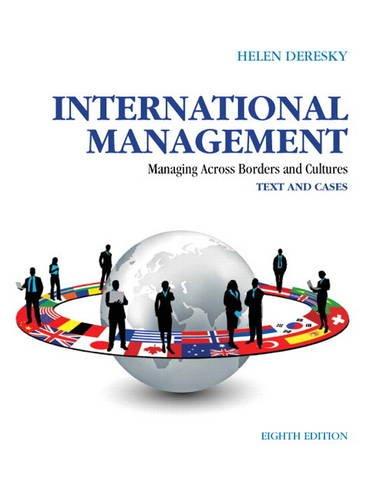In 2005 Nike returned to reporting on its social and environmental practices after a couple of years
Question:
In 2005 Nike returned to reporting on its social and environmental practices after a couple of years of silence due to legal concerns. The sports and clothing company is very important to countries such as Vietnam, where it is the largest private-sector employer with more than 50,000 workers producing shoes through subcontractors. Nike’s 2005 report makes sobering reading, as it describes widespread problems in Asian factories. The company said it audited hundreds of factories in 2003 and 2004 and found cases of abusive treatment in more than a quarter of its South Asian plants. For example, between 25% and 50% of the factories in the region restrict access to toilets and drinking water during the workday. The same percentage of factories denies workers at least one day off in seven. In more than half of Nike’s factories employees work more than 60 hours per week. In up to 25% of the factories, workers refusing overtime were punished. Wages were below the legal minimum at up to 25% of factories.
For the first time in a major corporate report, the details of all the factories were published. The report was significant for this transparency and being so candid about the problems that workers for Nike faced, and therefore the continuing challenges for the management. The NGOs working on these issues know that such problems are common. Indeed, they realize that the company invested more in improving conditions than many of its competitors. Studies of voluntary corporate attempts at improving labor standards in global supply chains have suggested that while they are delivering widespread improvements, new approaches are needed that engage governments, NGOs, and local businesses.
This realization led to a new strategy from Nike. In May 2005 Nike’s vice president of corporate responsibility, Hannah Jones, told delegates at the Ethical Trading Initiative (ETI) conference that, whereas the company had previously been looking into how to solve problems for themselves, now they are exploring how to create systemic change in the industry. She explained that “premium brands are in a lonely leadership position” because “consumers are not rewarding us” for investments in improved social performance in supply chains. Like other companies, they have realized that the responsibility of one is to work towards the accountability of all. Consequently, one of Nike’s new corporate citizenship goals is “to effect positive, systemic change in working conditions within the footwear, apparel and equipment industries.” This involves the company engaging labor ministries, civil society, and competitors around the world to try to raise the bar so that all companies have to attain better standards of social and environmental performance. One example is Nike’s involvement in the Multi-Fibre Agreement (MFA) Forum to help countries, unions, and others plan for the consequences of the end of the MFA. The agreement and the Forum were set up by the World Trade Organization to help developed countries compete in the textile industry. These have both since ended.
This new strategy is beyond what many consultants, media commentators, and academics currently understand. By claiming to be an advance in thinking, an article in The Economist in May, 2005, by the worldwide managing director of McKinsey & Company, actually illustrated the limits of current consulting advice. It suggested that seeking good societal relations should be seen as both good for society and good for profitability. “Profits should not be seen as an end in themselves,” suggested Ian Davis, “but rather as a signal from society that their company is succeeding in its mission of providing something people want. However, those who have experience working in this field for some years, including Nike, realize that, however we may wish to talk about the compatibility of profits with people and planet, the current societal frameworks for business are not making this a reality. The implication is that we have to make this so by changing those frameworks.
Case Questions
1. Discuss the challenges regarding corporate social responsibility that companies in the apparel industry face in their supply chains around the world.
2. Discuss the meaning and implications of the statement by a Nike representative that “consumers are not rewarding us for investments in improved social performance in supply chains.”
3. What does it mean to have an industry open-systems approach to social responsibility? What parties are involved? Who are the stakeholders?
4. What is meant by “leadership beyond borders”?
5. Is it possible to have “a compatibility of profits with people and planet”? Whose responsibility is it to achieve that state?
6. Research Nike’s CSR actions since this time frame and why it has earned the reputation as one of the world’s foremost organizations in sustainability.
Step by Step Answer:

International Management Managing Across Borders And Cultures Text And Cases
ISBN: 9780133062120
8th Edition
Authors: Helen Deresky





